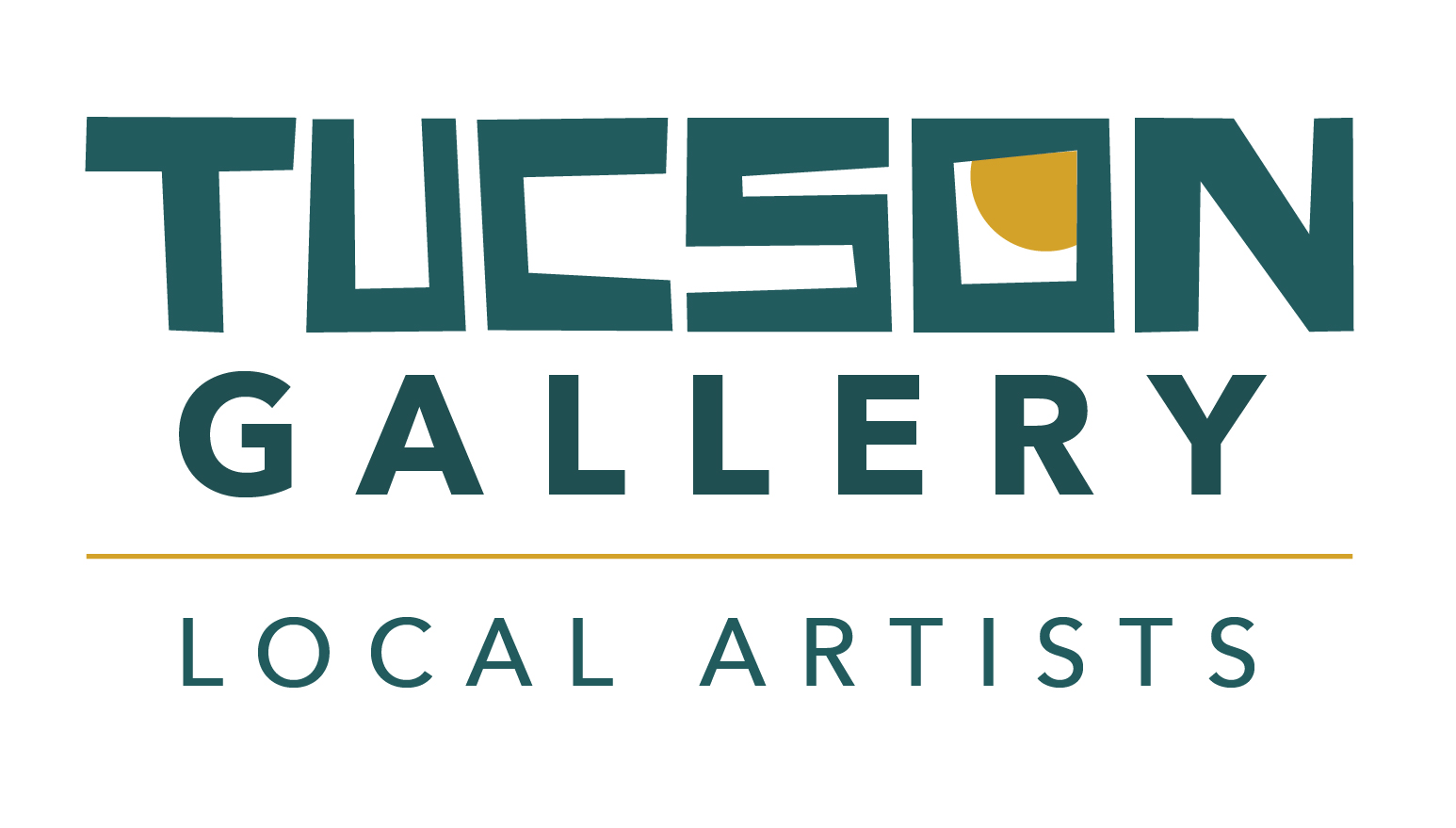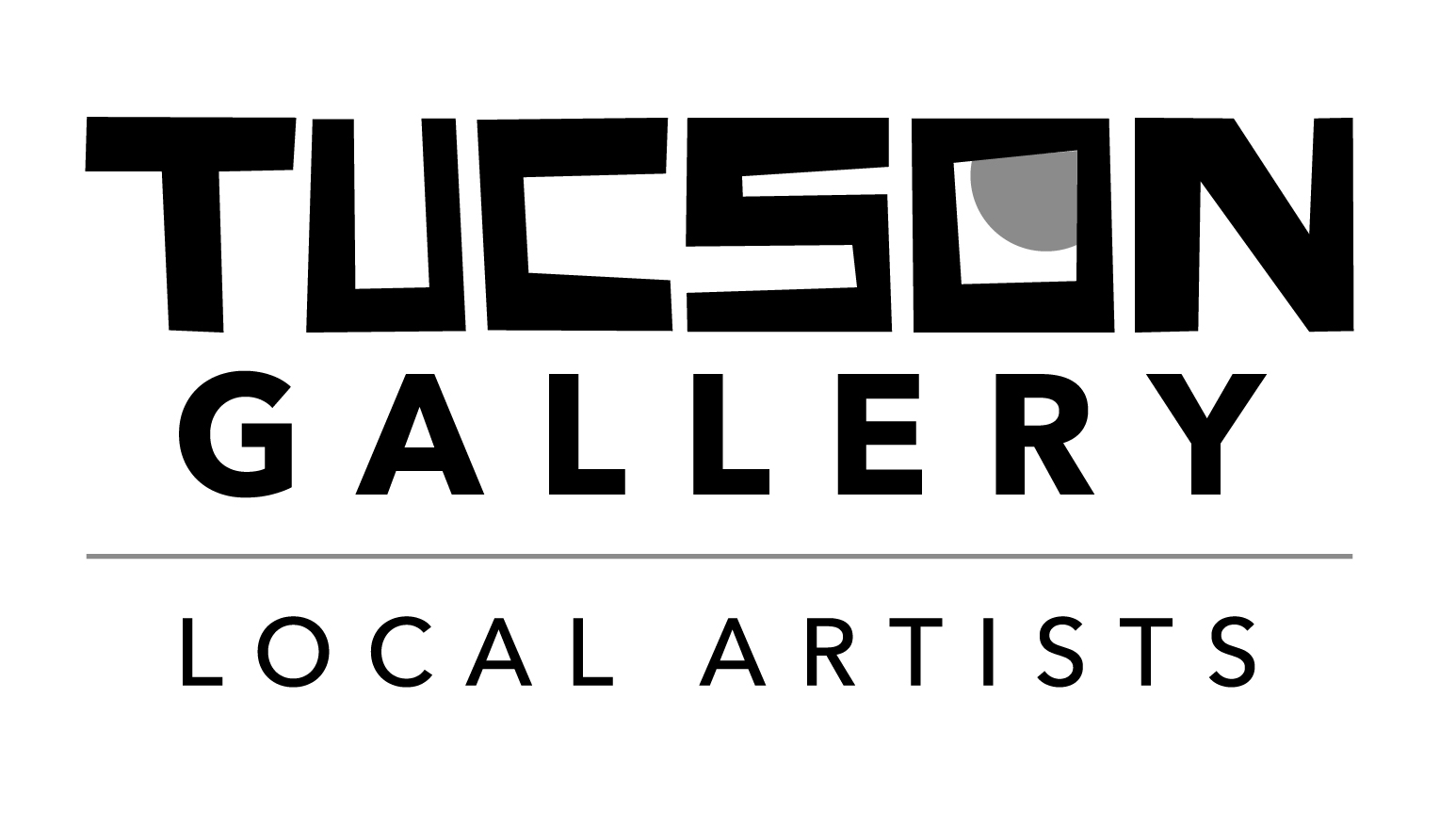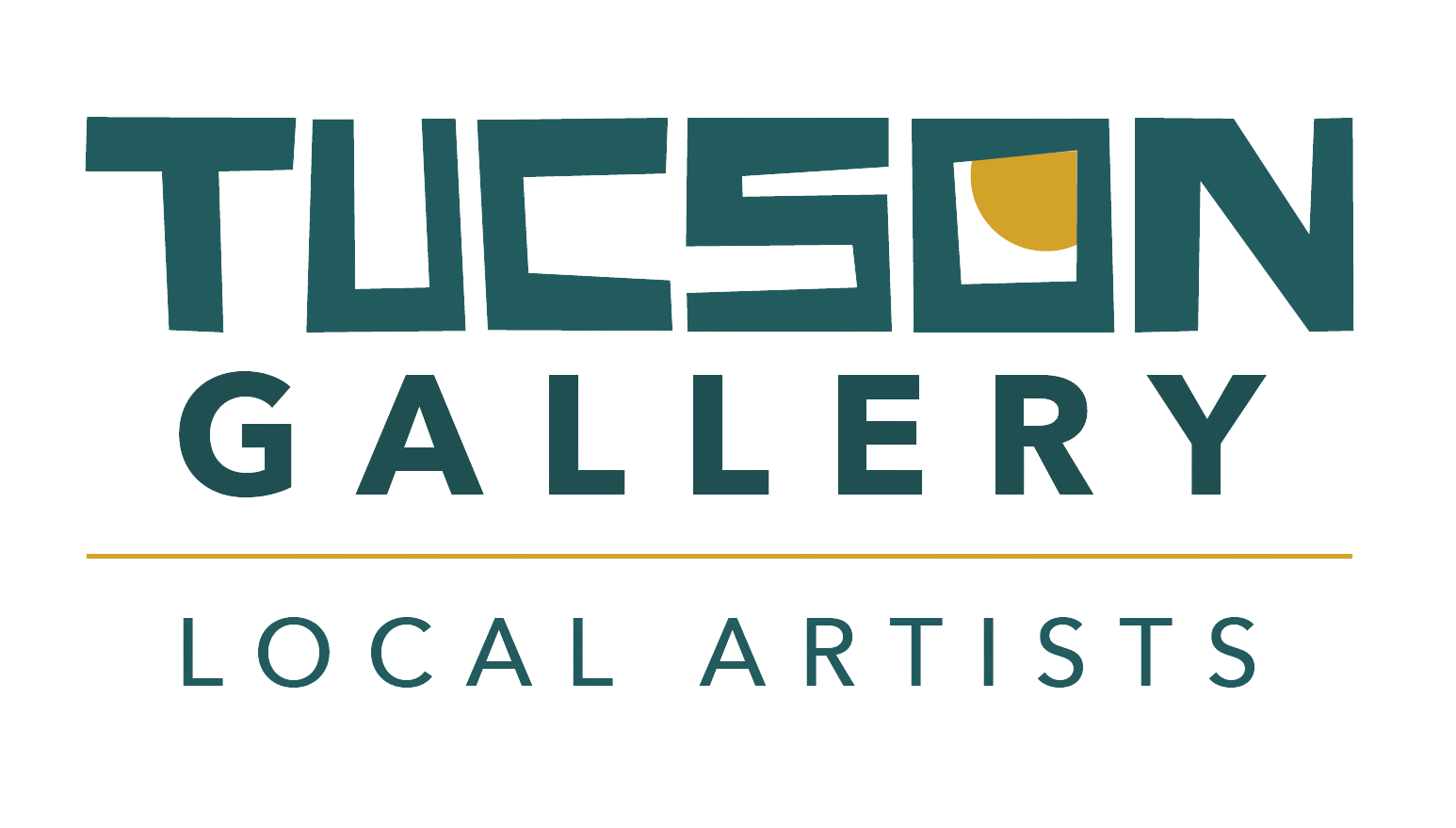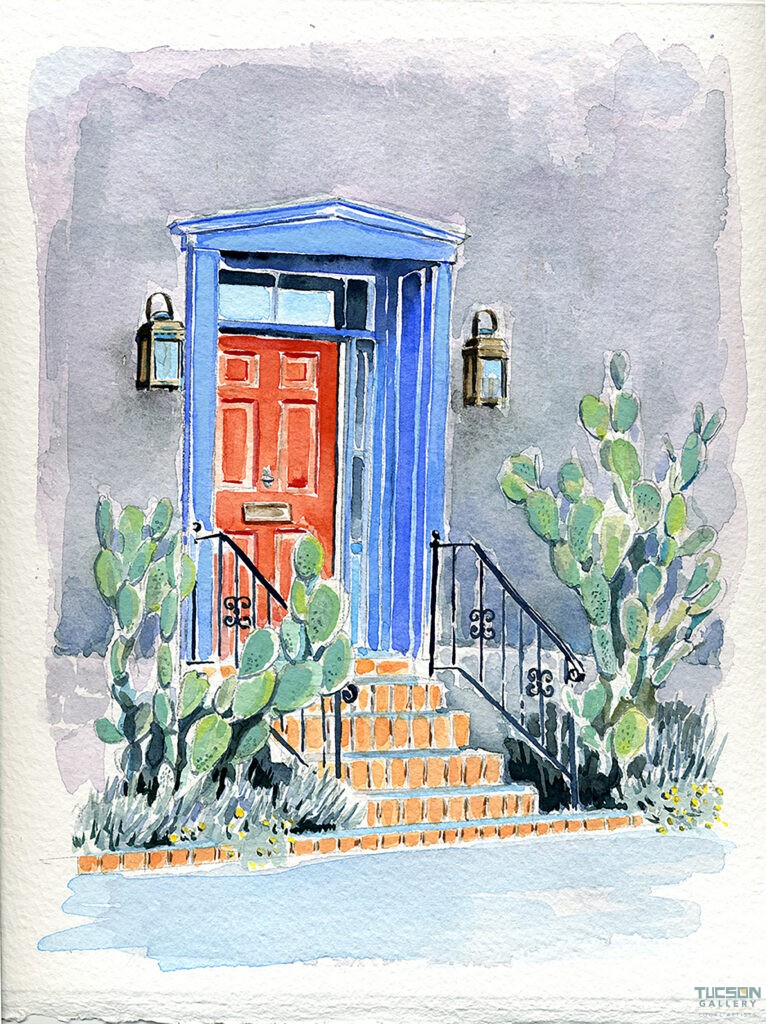


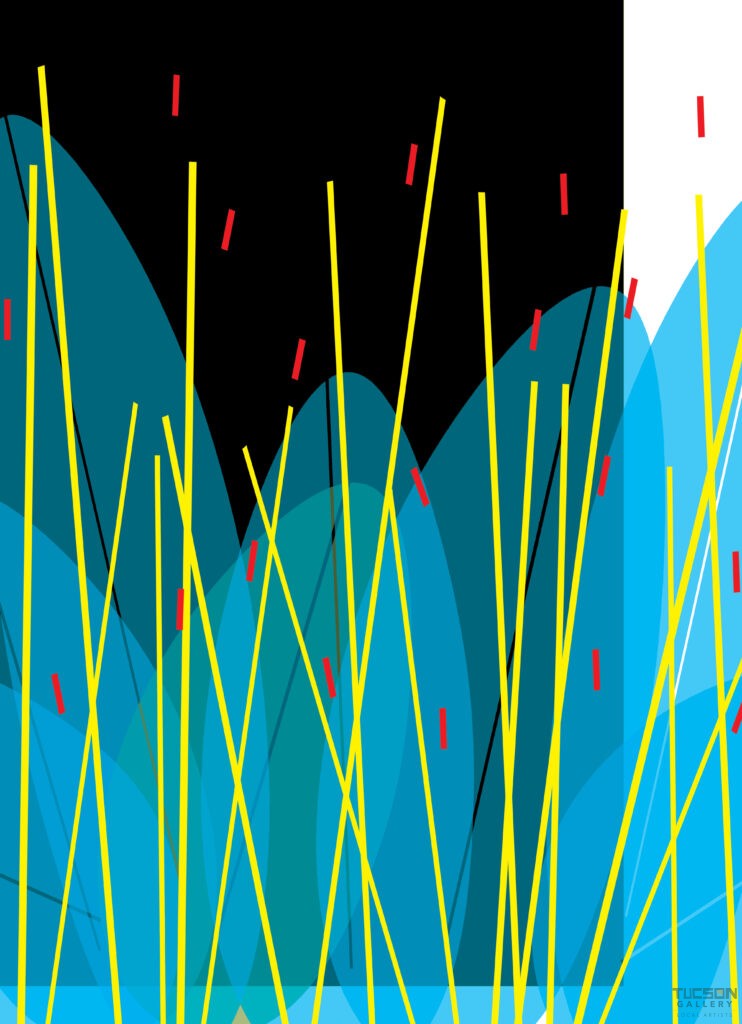
Embark on a journey into the artistic world of Ralph Philabaum, where every stroke tells a story and every color sings a tune. Join us on our website as we unfold the tale of a painter who colors beyond the lines of tradition, weaving a narrative that’s as vibrant as his watercolors. Ralph’s odyssey from a house painter to an artist who captures the spirit of the Southwest with a brush and palette is not just inspiring—it’s a testament to the power of following one’s passion.
A Canvas of Curiosity
Dive into the essence of Ralph’s artistry, where Aztec mythology meets the wilds of the Southwest. Discover how a simple bottle of tequila sparked a creative explosion, leading to a series of watercolor masterpieces that blend cultural motifs with the intricate details of local fauna.
The Alchemy of Art
Explore the meticulous techniques behind Ralph’s watercolors, where every detail is a deliberate stroke of genius. From the use of a single-hair brush to the magical corrections made with a dab of water, Ralph’s work is a delicate dance between precision and spontaneity.
From Palette to Passion
Ralph’s journey is more than just a transition from one medium to another; it’s about finding one’s true calling amidst the colors and canvases. His story is a vivid reminder that it’s never too late to embrace your creative destiny.
Episode Highlights:
Immerse Yourself in Ralph’s World
Don’t just listen to his story—experience it. Browse through a gallery of candid shots from our podcast event, making you feel as though you were right there, witnessing the magic unfold. See Ralph’s artistry through his eyes, and let your imagination roam free in the landscapes he’s so intricately painted.
Engage and Explore
Join us in celebrating the artistic voyage of Ralph Philabaum—a journey of exploration, discovery, and boundless creativity.
Tom Heath
We are back for another installment of Meet the Artist, a production of the Tucson Gallery down here in downtown Tucson. We’re on 300 East Congress, we’re in the Rialto Theater Block across from Hotel Congress, and we feature the work of 30 local artists, actually I think more than that at this point. And sometimes, every now and then, we’re lucky enough to get them to come into the gallery and talk about their work and when they do, we put a microphone in front of them and ask them a bunch of questions and then they get mad at us and they never come back. So we want to take full advantage while they’re here and today we have, I think the only artist in our gallery that works with watercolor, we’ve got Ralph Philabon.
Ralph Philabaum
How are you doing, sir?
Tom Heath
I’m good. Thanks for having me. A little bit closer.
Ralph Philabaum
All right. How are you doing, sir? There we go.
Tom Heath
That’s perfect there. So when we were looking to set up this gallery, my business partners and I, we had a little understanding of art. My partner’s more than myself. And I got to tell you, over the last year and a half, I have learned so much. Like every artist, there’s so much ways that you can create beauty in this world. You chose to use watercolors. Why?
Ralph Philabaum
I had actually never done any art with color other than silk screening prior to that. So, everything I’ve ever done has always just been black and white, ink on paper. And I saw some paintings at a restaurant in Phoenix and they’re really bright and colorful and so I thought I wanted to try something. So the first one I actually did was in colored pencil. Okay. And then I was like, well, let’s try paint. So I went with watercolor. When did you see this work in Phoenix? It was a couple of years ago, actually.
Tom Heath
Oh, so you’ve been doing this for just a few years in watercolor? 14 months, like, yeah. Are you serious? Yeah. Yeah. The intricacy of the work that you do, I mean, I would thought this is like a lifelong pattern.
Ralph Philabaum
It’s got to be the drawing or something, even drawing. I’ve always drawn like that very, very detailed but I never used a paintbrush on a canvas before.
Tom Heath
That is amazing to me. I honestly am, I thought you’ve been doing this for quite a while. Yeah. So, if you look at his work and you can see some of that on our website and you can see more in the gallery, this is extremely intricate and delicate. You know, it’s like you said you have a brush that has like one hair on it?
Ralph Philabaum
Yeah, it’s like it’s a 20 -0, it’s a 20 -0, it’s a really, really, really small, yeah.
Tom Heath
And so, I look at these things and I don’t know how someone can get that fine with a brush and watercolor and into some of these images, that’s…
Ralph Philabaum
Thanks. It’s um, you can you can ink back over also. So, if you go outside the lines, you know, typically I’ll come back with the –
Tom Heath
He just revealed the magic secret, people. I thought the lady was actually levitating. Turns out every now and then you might make a mistake and have to fix it.
Ralph Philabaum
It’s amazing what you can do with watercolor, how you can fix mistakes. You can erase it even, it’s like crazy. Wet it in paper towel and mostly gone and move on, yeah.
Tom Heath
Ah, have you erased anything? Oh, yeah.
Ralph Philabaum
That’s good then. Yeah, the guy that’s here, you know, it’s typical, I’ll be inking something in and I’ll stick my hand right in the middle of wet ink and make a big thing.
Tom Heath
Okay.
Ralph Philabaum
There’s actually ink erasers also, which have like some kind of a grit in them that you can carefully grind it away.
Tom Heath
So, you’re like working on something, you lean over and you like put your elbow in it and…
Ralph Philabaum
Yeah,
Tom Heath
yeah. It’s all over the place. Okay. That sounds more like me. That’s what I would be doing. Then what got you into art in the first place? What’s got you drawing?
Ralph Philabaum
I’ve done it since I can remember like in seventh grade, you know, it’s like I’ve always taken art and it’s something I’ve loved forever.
Tom Heath
So art in the seventh grade, it looks, you know, you’re definitely a young man but you’re out of the seventh grade. Yeah. I hope.
Ralph Philabaum
Sixty -three.
Tom Heath
So hopefully you’re not still in the seventh grade. But what, between the seventh grade and 14 months ago, what, had you been selling art? Were you doing things professionally? I’d never.
Ralph Philabaum
I had a silk screening company in the 80s. really small. It was pretty much just me and my father -in -law and mother -in -law would come help and my wife and come help with it. But I was like the salesman and the artist and then they would come help do production at night. And I did that for a little while and it didn’t make enough money to do anything with, so we shut that down. But other than that, no. I just, I drew back then and I stopped until I started messing with this thing.
Tom Heath
Wow, that just seems, I mean, I’m glad you’re doing it now, but it seems like there are a lot of years where I’m curious what would have come out of your mind. Because your stuff is very, it’s very colorful and it’s very creative. You pair, you know, Southwestern animals together and you do it in a way that’s just, it’s a unique vision.
Ralph Philabaum
Thanks, thanks. I think it’s cool and it’s very rewarding that I’m finding that others like it, you know. I never thought I could sell a painting and then moved a few of them, I mean, it’s rewarding.
Tom Heath
Your originals are actually, what size are they? They’re the same size, right? They’re 11 by 16, yeah. Which is fairly small a canvas to work off of with watercolor. I don’t know much about watercolor painters. Did you research, like, why did you pick that size? Is it just what you had in the closet?
Ralph Philabaum
No, it was just what I was comfortable with as far as the details and so forth thinking where your elbow landed Probably wasn’t gonna be quite it could land outside of it It’s a it. It’s just a comfortable size for me. I tried doing some larger ones and It was hard It’s hard for me to Not rush it. Okay, you know you want to be done with it
Tom Heath
So, the 11 by 16 is the right size and fits your style and the nice thing about technology now is the reproductions. You can get a nice reproduction on canvas that is 24 by 36 and you can fit in the space that you need. I think when Tony Ray first saw your work and we saw the reproduction and then he saw your original, he literally called me and said, you won’t believe how intricate this is. It’s 11 by 16. It goes go look at that line and see that line on the big one and then look at how he would have done that on something 11 by 16 So I again, I think we’re just very impressed with your technical skills as well as well as your vision. Thanks. I appreciate it Did you did you go to school for this?
Ralph Philabaum
Did you are you just picking it up and you just no I never went to any formal education on it You know just high school art and junior high art and like one semester of pima college art. Okay
Tom Heath
And do you mind me asking what you do, like you had to make money somehow, were you in any type of artistic environment or like what was your…
Ralph Philabaum
No, my job, I’m a painter by trade, a house painter. I have a small painting company, it’s P3 Contracting, we’re remodeling a painting contractor. So, that was primarily my art before I did this. It’s like we painted the Rialto and that’s, you know, right next door. You painted the exterior, the entry, we restored the ticket booth. That was you? Yeah. Oh my gosh. Okay. That was my art. So, that’s very artistic.
Tom Heath
Yeah, I think so. Yeah, absolutely. Because you have to bring it back to, it’s got to be modern and antique at the same time. Yeah. Again, I think you’re mixing styles back and forth like you do with your art. And it’s, I can’t even describe, you know, your art adequately, so I would definitely have people check it out on the website so they can really get this image. But where do these creature partner pairings come from? Do you see them in the nature and you’re like, hey, I’m going to put these two together or, you know, because you got like a rabbit and a javelina and
Ralph Philabaum
– Right. So, it’s going to sound like a really good story. It all started with a bottle of tequila.
Tom Heath
All right, now we’re getting to the good stuff here.
Ralph Philabaum
One of my employees gave me this bottle of suerte tequila and it had this rabbit on it And I thought this rabbit was totally cool And he had like little things on him like a diamond on his foot and so on and little sparkle things Okay, and then and then probably a year later. I saw another rabbit on a bottle of silencio mezcal and Like what what is it with rabbits and agave based spirits? So I researched it a little bit and it goes back to the Aztecs and the Aztec goddess of fertility and the agave Was my well and my well gave birth to 400 rabbit Children that she breastfed Oakley or pulque which is a rough Version of tequila or Bacanora or Mezcal. And so, these 400 rabbits were these troublemaking deities. And so, that started me on the path of drawing these rabbits and then I got tired of drawing rabbits.
Tom Heath
And the tequila ran out. Then I got a bottle of scotch. Right, yeah.
Ralph Philabaum
And this is where I went. And so, then I started to morph into this Alebrije thing where like the Oaxacan wood carvings and and the painting that are on the Oaxacan woodcarving is going on with the rabbits. The rabbits have their calavera tile patterns and it just kind of grew out from that.
Tom Heath
Well, that kind of explains the next question but I noticed in we were inventorying your work and getting it ready for the gallery, there’s definitely a lot of Aztec influences. You know, some of the pieces you sent to me and this is just ignorant on my part but I had to Google what the name of the piece was and I wasn’t 100 % sure if you’d sent it inaccurately or… Yeah, they’re kind of weird, yeah. Because there’s like the warrior god.
Ralph Philabaum
Yeah. With Szilopochtli is that hummingbird and that was the Aztec god of war and he was either represented as a hummingbird or as an eagle and as a hummingbird, he was known as the blue one and that’s why there’s so much blue in that hummingbird.
Tom Heath
Okay.
Ralph Philabaum
And so, that’s him and then Ometochtli was that one, the black rabbit. It was also known as two rabbit. So, of the 400 rabbits, only five of them had names and I can’t name them off for you. That’s okay. It’s not a test. One of them was the winged one, which is the raven and the other that I have is only totally or two rabbit. And so, as I…
Tom Heath
Like what got you into that? Was it literally the tequila that got you into the Aztec and you just started doing more and more and then all this art sort of pours from that? Yeah. Wow. Yeah. Yeah. See, tequila does. It does work. It does work. If used in the right application.
Ralph Philabaum
It works in mysterious ways, yeah.
Tom Heath
It was interesting because like the winged one, I saw that and that’s a raven and that made sense to me, right? The winged one. Yeah. I didn’t realize that it had its roots in Aztec culture.
Ralph Philabaum
Yeah. That was one of the rabbits.
Tom Heath
Yeah. Do like all of your works then have some connection to that?
Ralph Philabaum
No. So, I started expanding a little bit with the javelina and that’s where it rolled off into the Alebrijes, the Oaxacan wood carving patterns and then, but a lot of it does.
Tom Heath
I was hoping because you have one called Peeps, like the Easter candy and I was like, man, I’m hoping that has an Aztec root to it. Doesn’t.
Ralph Philabaum
It has Easter candy roots.
Tom Heath
I was like, if I could tie Peeps back, then I can have a cultural snack. Right.
Ralph Philabaum
I looked at her and she was purple and it was Easter I think when I was painting that and I’m like, ah, this is Peeps.
Tom Heath
Is it, do you get into anything that doesn’t involve animals? Is it any landscapes, any people, or does everything have a…
Ralph Philabaum
Not yet. Okay. Next one, I got that grasshopper mouse that I’m working on right now, and then I think the next one I’m going to do is going to be a coyote.
Tom Heath
Okay. And again, you have to see this to understand it. You brought us in one of your originals, and please help me with the name again, Wichipotle?
Ralph Philabaum
It’s Wichipotle, and I don’t know if my novel pronunciation is accurate or not, but… Yeah, it’s like H -U -I -T -Z -I -L -P -O -C -T -H -L -I.
Tom Heath
And that’s the one I had to look up to see. It’s Zillipoke. Is that actually the name or did he like hit the wrong buttons on the phone? But other people know that. But I was looking at it and, you know, it’s the hummingbird and then I’m looking at this piece for a while and then you draw my attention, you like zero in like from outer space and you know how they bring those satellite images in down to the finest point. You just zoom all the way down and I look and you tell me and you show me, there’s this little tiny hummingbird feeder. Right.
Ralph Philabaum
Hanging off a saguaro.
Tom Heath
And it’s barely the size of like a needle, like the head of a needle hanging off of a saguaro way in the background of this photo and it’s, you know, when you look at it, it’s actually got definition. It’s not just like a red blob that’s a, it’s, anyway, I just, I just think that’s, that’s
Ralph Philabaum
fun. I put some stuff in there like that. I’ve got one called Blood Moon that has a, and now I’m not going to remember the name of the rabbit constellation, but it has the rabbit constellation in the sky. Okay. Lepus is what it’s called. Lepus.
Tom Heath
Lepus. Yeah. There’s a bee film called The Night of the Lepus, The Killer Lepus, or something filmed in Tucson. I remember seeing something about that. I may have seen it. With the killer rabbits. Yeah, it’s filmed here, so I had to see it. And it was a horrible movie. It was awesome. And I think Tequila was involved with that as well. The direction, yeah. So, 14 months into this and I’ve noticed you’ve been doing a lot of shows. You got one coming up here down. You just came back from Tuvok. You’ve got one coming up at the Museum of Art.
Ralph Philabaum
Tuvok Museum of Art this weekend, yeah, I bet, yeah.
Tom Heath
So, unfortunately, by the time this airs, that will have passed, but you’re getting out there. I mean, for 14 months. I know a lot of artists that we’ve interviewed on this show that have been doing art for years before they really get the courage to go out and into the world but 14 months that’s for the amount of work that you’ve done and being in this place it really seems like quite aggressive.
Ralph Philabaum
I’ve been in sales most of my life and so it doesn’t bother me to walk in and knock on somebody’s door and just say hey look at this what do you think it won’t hurt my feelings if you hate it you know it’s uh I’m not tender like that so I’m not afraid for somebody to say get out earlier. But yeah, it’s crazy actually. When the very first one sold and the first one that sold was the winged one. I had another guy at Petroglyphs if that’s okay. Oh yeah, of course. Petroglyphs over in the Mercado. Yeah. And he’s actually sold like 10 pieces. I mean, it’s just been really gratifying. I mean, it’s a feel -good thing. Good. Yeah, Godzilla Polk Lee just got accepted to be at Steinfeld’s for the Art Walk. Nice. So, it’s, you know, that one will be there, I think, for four or five weeks.
Tom Heath
Okay.
Ralph Philabaum
Yeah. Unless you sell it tonight. Well, that’s our goal.
Tom Heath
We want to ruin the Steinfeld Art Walk. Well, I hope we sell it, but if we don’t tonight, it’s going to move pretty quickly, as I would imagine. You haven’t put your originals out. I haven’t put any out. Yeah, so when you’re
Ralph Philabaum
selling pieces, you’re selling reproductions. Yeah, they actually blow up really cool. Yeah. The way the colors separate. But we do have a couple originals in there. I mean, do you
Tom Heath
intend to start selling originals or is that something you just… I think so. You know,
Ralph Philabaum
I didn’t know where to go with them. It was actually Tony Ray that talked to me and you guys, you and Darren. So yeah, I put some out at Tubach, just dealers.
Tom Heath
Okay. Well I think when you find the people that really get into what you’re doing, they see exactly what you’re doing, and you’re gonna find an audience in 14 months. I don’t think it’s enough time for people to really fully understand what you’re putting out. And you just keep working the shows, working the exhibits, getting the galleries, and you know, people are gonna start recognizing because there’s a distinctive style about a Ralph Filibon. Oh cool, thank you. And they’re all signed Rafa. Yeah. What is Rafa? Is that the…
Ralph Philabaum
Rafa is short for Raphael. Okay. Because art by Ralph just isn’t like there, you know.
Tom Heath
Not when you say it like that.
Ralph Philabaum
Art by Ralph. Yeah. My dad made fun of my name. My dad.
Tom Heath
Did he have anything to do with the naming of you or did he want to call you Raphael?
Ralph Philabaum
No, he named me after his best friend, you know.
Tom Heath
Just don’t be an artist. Yeah. If you do, change your name to Raphael. I saw the Rafa and I was like, you know, I assumed it was a shortened version of Ralph Philip on somewhere in there because that is a lot to paint in watercolors on a painting. You’d have to go for a larger size, 16 by 20 just to get your whole name on there. And so, we have some of the work in the gallery, you’re in a few other places. You mentioned Petroglyphs, you’re going to be at Steinfeld. What about personally? Do you have your own website? Do you have social media? How do people follow you?
Ralph Philabaum
I have Art by Rafa on Facebook and I have artbyrafa .com website that my daughter -in -law
Tom Heath
built for me. Nice. All right. Well, I can’t wait to see the next 14 months. This has just been an explosion. So, in the next 14 months, I guess this will be those interviews where I’m like, oh, I talked to him way back when when he was just getting started. That’s going to be it. And if you want to see any of Ralph’s work, if you want to, I’m sorry, Rafa’s work, Rafael, I’m not Ralph, gonna see any of his work. We’ve got several of them up on our website. We’re getting a few more up in the coming weeks. It’s the TucsonGallery .com. There’s an artist section, you can check him out as well as any of our other 30 plus artists here in Tucson. While you’re there, there’s social, or sorry, there’s a media page that has all the podcasts. So if you wanna listen to other artists or you might wanna hear the replay of this one, you can do it there. And we encourage you to check out our events page and sign up for our newsletter because you’ll get a notification once a month when people like Ralph
Tom Heath
Willebaum are coming into the gallery to highlight what they do. And that’s kind of special because if you didn’t sign up and you don’t know, you missed it. I’m sorry, but he brought in a work in progress, which is always fun. So, we’re going to get to see kind of that product before it’s finished. It’s got a big, I saw a big elbow stain on it.
Ralph Philabaum
Yeah, you can’t find it now though.
Tom Heath
Well, Ralph, I greatly appreciate your time. This is a lot of fun and I’m really excited about your future.
Ralph Philabaum
Thank you. I really appreciate the opportunity that you guys have given me. Thank you.
Tom Heath
Thank you for listening to Meet the Artist, a production by the Tucson Gallery, located inside of the Proper Shops at 300 East Conger Street in Tucson, Arizona. The mission of the Tucson Gallery is to support local artists by providing a space to show their art, a forum to engage with their audience, a virtual presence to connect with global patrons, an outlet to earn a fair price, and an opportunity to hone their business skills. Head over to TheTucsonGallery .com for more information about our live events, listen to other Meet the Artist podcasts, and check out the wide selection of art, gifts, and other items created by Tucson’s modern, thought -provoking, and forward -thinking artists.
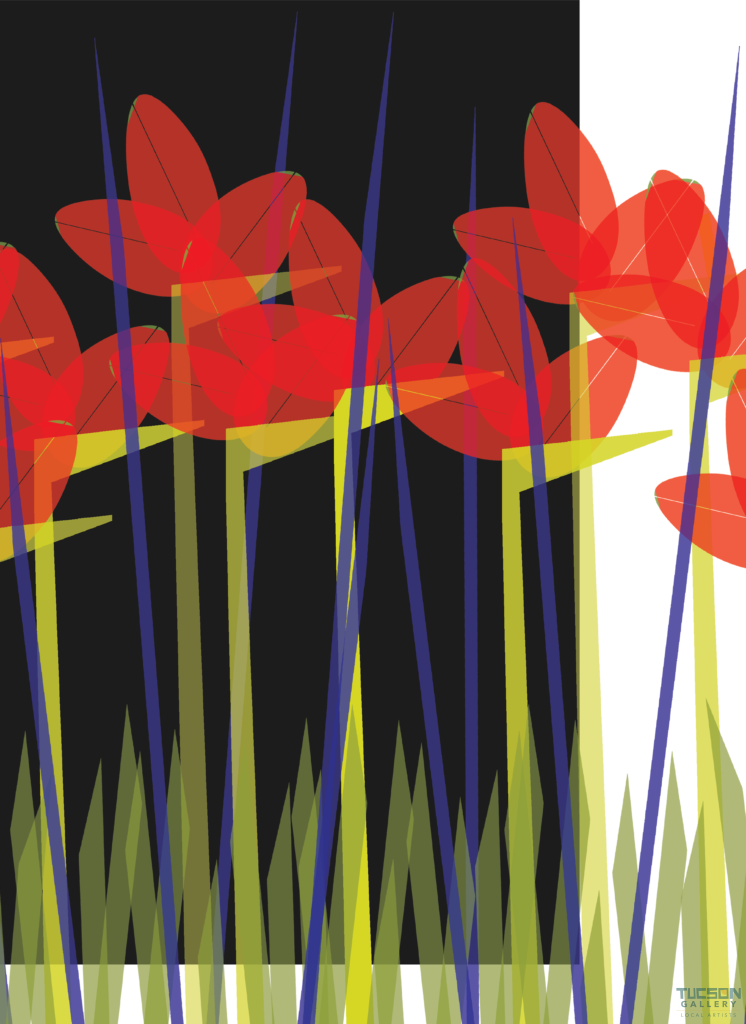
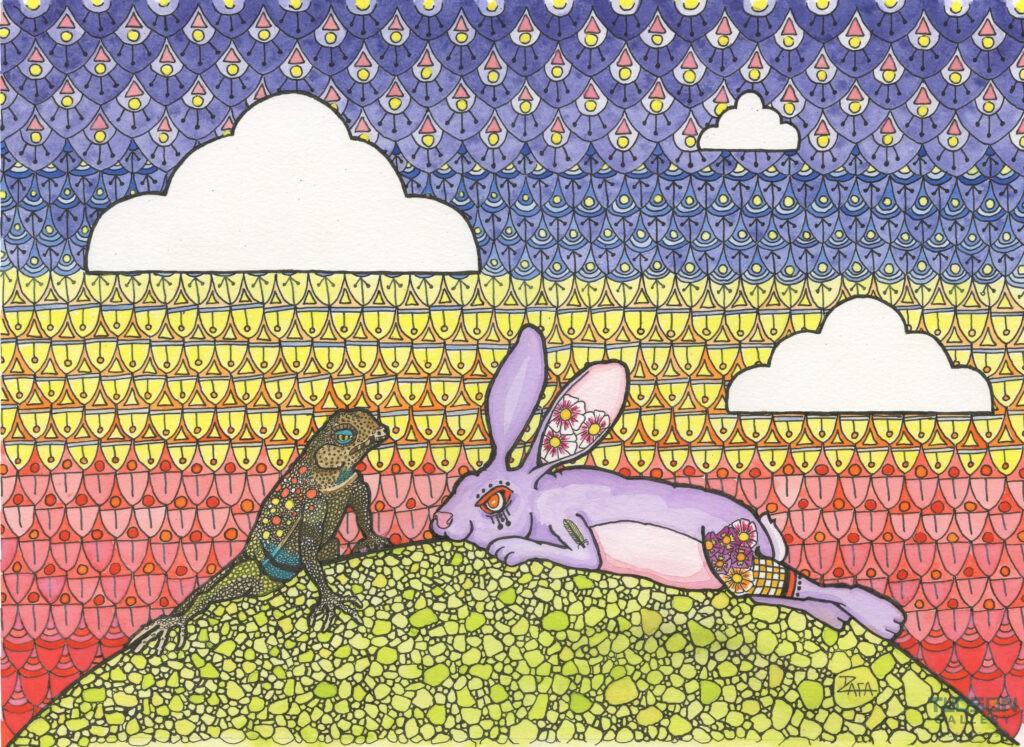
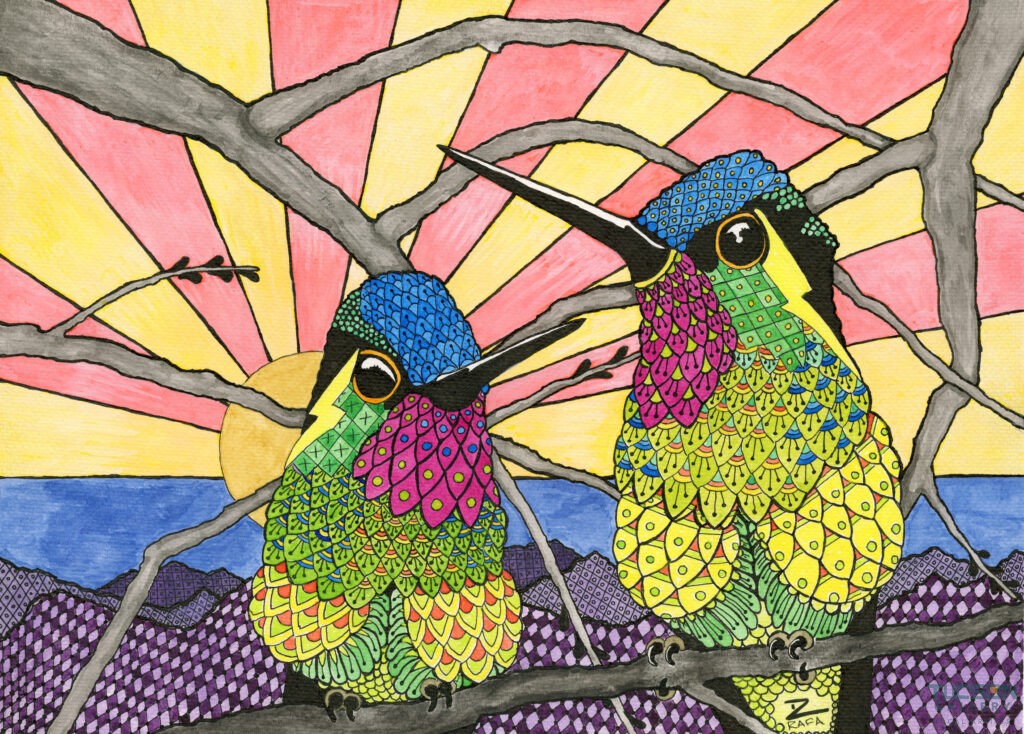
All right, welcome back to another episode of Meet the Artist. It’s a production of the Tucson Gallery in downtown Tucson. We’re located at 300 East Congress Street. We’re across from Hotel Congress. We’re in the same block as the Rialto Theater. All kinds of good stuff happening in downtown Tucson. And Tucson Gallery is proud to be situated right here in a busy corner of Congress and Fifth. Every now and then, we’re lucky enough to have one of our famous artists from Tucson come into the gallery. And when they do we snag them put some headphones on and say let’s talk. Yeah today. We’re talking with one of our fabulous muralists The very well -known here in Tucson, and I think right now right now controversial. Yes muralist Ignacio Garcia
Yes, welcome. Hey, thank you for having me. I appreciate this time. All right, so the first question How many murals have you done four thousand five thousand? No, actually, I’ve just counted them I think maybe around 40 50. No, these are just like For the public to see but oh, yeah, the residential ones for that when I started I’m sure there’s probably maybe another 20 I think so not much not much. No, you’ve done more than that. I’m sure I have I literally went to my all my My resources there that I had and I think was around
maybe 50s to 60s. Not much. That surprised me. I mean, I know they’re big so
they take a lot of time. I think so. I don’t, I try not to rush it. That’s probably the reason why I really take my time on it and because when you have something that speaks for itself, it stands out. So, I really enjoy that and so I don’t try to mark my territory. So, you’re a quality not quantity guy. Absolutely, yeah, definitely.
I had the privilege for the other podcast to do Life Along the Streetcar. I interviewed a couple in 2023 who had recently gotten married and for their wedding they didn’t ask for gifts, they asked for money for their GoFundMe site so you could do their mural.
That’s right, that’s right. I was quite surprised, I was honored and I was like, what a great idea. And just to kind of show his love towards his wife to have this beautiful mural and what they’re all about. I was like, let’s do it, let’s do it. So I was really stoked for it.
And I remember talking with them, I said, did you ask Ignacio what to do? Did he give you an idea? And then I get the response was, you know what, we gave him some thoughts as to what we wanted to have incorporated, but we wanted him to have the freedom to create his vision of that. And that got me thinking, like how do these murals get created? Do you go to someone and say, hey, I wanna do this on your wall? Or do they come to you with a vision Or do they say, hey, we’d kind of like something that’s fun and…
It’s a little bit of everything. I think, first of all, is what they are all about. I like to kind of read their brains and kind of dissect what their personality is. And from there, I like to kind of do some research and then I kind of give that back to them and say, what do you think? And they just love it. And so kind of go back and forth. It’s a sense of appreciation of what they’re all about because I just like doing different things. I’m just very curious of what how people think and what they’re all about and I kind of like to express that So and again, it’s every projects different and I like the challenge of that. I think it’s probably because of that It’s just learning along the way and you need to meet people and surprisingly It’s just the information that I gained from that just a one -on -one person. It’s just I like it’s addicting
I mean so by the time the mural actually gets by the time you start putting paint on on a wall You you’ve done this mural dozens of times in paper and print, and you’ve worked back and forth.
Yes, it takes me at least, the research takes me probably twice as long to do it right, because to make sure to, the thing is that, you know, wherever the wall is at, you want to see how it complements the building and the surrounding. You don’t want to have like an eyesore that people will just kind of be like, and it just takes away from other beauty elements around the community or the buildings. So I try to balance everything out because it does complement the surroundings as well.
But yeah, I have to kind of make sure everything’s fine. And sometimes, you’d be surprised, I try to throw it in a little something ugly, just kind of balance it out. Because I think that’s one of my little tricks that I try to do because you have, for example, five different renders to kind of start off. You have to throw one in there that’s completely way off and just kind of weird. Just to kind of, you have to kind of refresh your eye in that way. Okay, interesting. So, but sometimes they like that. So it kind of throws everything off from the original. But I love that adventure and it kind of, it’s just, it’s always, it’s just fascinating. It’s like exploring a new territory.
every single time. So when did you know you were gonna be a muralist? At what point, I mean, did you, what were you doing before you were painting on walls? I was,
I was actually painting musicians, like celebrities, and this was… Painting
portraits of them, or painting on them, like Kiss, like going on stage? Yeah, like naked
painting on their body, you know. No, it’s portraits of what they do, because usually, I used to work in the radio station as a DJ, so I used to do live, yeah, like mixing live. And so with that, you get to meet the artist. And then before they become famous, you get to meet them in person. So that’s kind of how I got my way into it. And they kind of wanted some approach to themselves and finding out they became world famous, like Eminem, for example. I mean, that can just go on like back in the early 2000s.
So – That wasn’t in Tucson though.
It was in Tucson and in Phoenix. Okay. So this was something that kind of come came unexpected in my lab I was actually in Phoenix at that time DJing and I just I needed to come to Tucson to get away from Phoenix for a bit and it was only going to be for like three months and then I’m staying here and working in the radio for hot 98 and Yeah, so I was there for two and a half years, you know
And you meet these artists and then you would start to unlike portraits of them started doing portraits. Yeah towards the end
Clear Channel took over, so it wasn’t the same. The creative field was pretty much gone. So then slowly we just kind of networking with them and figuring out a way to help out the new artists. So at that time, musicians were actually depending on the DJs because we were playing their music in the clubs to get their word out there. So that’s how they were coming to us. We were more valuable at that time. And to see where DJs stand now, it’s unremarkable to me.
You know and so then at what point did you decide hey, I want to I want to paint on walls
So so then I had this guy That my sister was getting his hair hair done by him wanted a portrait of himself So he liked it so much. He just came up and say hey, would you like to paint my ceiling like a you know? Yes, it’s like really kind of kind of Versace, you know, you know elaborate. Mm -hmm, you know ornate house I was like, oh, yeah, it’s a really cool idea, you know, it’s like, yeah, let’s try it out. It was just more like a fun thing to do. He trusted me. I was like, you know, we can, we can always repaint it. So it was something to kind of try out. Turned out to, it ended up being like three months doing that, and every, you know, it ended up being a three month project, that was my first mural. And so, surprisingly, it just took off like crazy. So now I’m gonna show you this real quick that way you’ll see what this is my first. This is great radio people
He’s showing pictures. So I know I
Have you this radio? I would want you to to to explain what you see here real quick. Oh, no, he’s gonna put
He’s gonna flip this around on me. Oh, no
Okay, never mind. I guess I can’t find it right now. Well, what we’ll do is So this was my first mural this is like the Sistine Chapel exactly this I mean
I mean, we got to put this on the Tucson Gallery’s Facebook page so they can see this, but this looks like it’s like a church in Rome, like done by one of the great masters. That’s incredible. Yeah, that was me.
I was 23 years old. That’s you? That’s me.
Oh, yeah, we got to put this picture on Facebook so people can see that because that does not look like you. It looks like a little kid.
Yeah, that was a long time ago, and that’s how it all started. and then kind of word spread and then did a lot of these fresco kind of
because at that time that was popular yeah and now now you see a lot of public work so what does that look like how do you get into the into the public setting is that do you do audition for that or do people come seek you out at first you
just ask hey you know can I paint your wall sure you know again you know you it’s a great way to kind of get your your name out there but you know at first is, you know, let’s see, 10 years ago, people thought it was like, oh, it’s kind of cool, but it wasn’t as gravitating as it is now. I mean, now it’s like globally people want to put murals everywhere. I think it’s going to last for a long time now because it’s the only way, it’s like it’s a marketing strategy and overall it’s not like social media that’s always instant because now you’re actually seeing a big piece. So I think that’s becoming an outdoor gallery everywhere. So it’s it’s gonna pretty much gonna last there. So yeah, so yeah
I don’t know how murals work across the country But in Tucson it seems like we’ve spent a lot of time trying to create something that is Appropriate for the building appropriate for the neighborhood appropriate for the topic So it’s it’s not just something that’s just a commercial for whatever the business is. It’s really about the community
No, I I live deliberately. That was my mission at first. This was like 10 years ago to kind of create a kind of a an outdoor gallery. I don’t know why. I think it’s just that it was a stupid idea that I had at that time because you know I was like well if people go to Italy and they see all these beautiful pieces in you know in the public and it’s historic you have to see these frescoes and all that. So I’m like why can’t Tucson have that? You know what I mean? Or anywhere can have that. So I was like Tucson was a great place to breathe that. And then so And then of course, the people here are just so open and friendly and they’re like, yeah, sure. So slowly started becoming that way in the public. But then I think 2016, that’s when it kind of started. But what it really, really started was after COVID. I think after George Floyd, that kind of made the statement of putting the message across. And somehow it just kind of carried it on its own, surprisingly but I’ll never forget that. I mean
people think it’s just kind of went on on its own but I honestly think I mean it was the George Floyd incident that actually sparked that and kind of put that message across and because of that it allowed artists to really put their you know their talent in in there
and then just kind of spread it that way. I think I think the community impact is important you know economically it’s a huge win for Tucson I mean you know in the Tucson Gallery, people come in for the murals, the people come to Tucson to tour murals. I mean, the collective muralist population is creating a lot of economic development for Tucson.
Yes. And that’s something that I learned along the way that I’m like, you know, if this is gonna be something that we can provide and including with the other artists that I actually talked to them, this was actually during COVID. I talked to Joe Padgett and Jessica Gonzalez, as well as Isaac Caruso. I was trying to get Rocky Sci -Fi to kind of say, hey, let’s team up here instead of, you know, instead of being independently and kind of not knowing each other, I think let’s just kind of collaborate. So, originally, I had an idea. It’s like, so we ended up going to Joe’s Padgett’s house and then we had a meeting and I was surprised that they would follow through. So, it was really nice to the first time to actually meet other muralists exactly the same, I know, hard work that we do behind, you know, painting, to be, you know, painting a mural. But, and then since then we just kind of felt like we understood the hard work that goes along with it. So we kind of became closer because of that
because not many people understood the hard work that went behind it. So, and it’s hard to explain that to people that, you know, so we just clicked. And since then we’ve just been helping each other out and helping other artists and supporting them and trying to influence other artists, too, as well.
I know when we started the gallery, you were the first person we approached, and long story behind that, which we won’t get into here, but one of your missions at that time was to make sure that other people had an opportunity to get into the art world. It wasn’t just about selling your work, it was about giving an opportunity for others.
That was my mission for a very long time. I felt that if having these public pieces of work, one thing that I … Okay, the reason why I had a passion for that is because when I was living in LA I’d see these beautiful works and during that art movement of the street art that was happening at that time with you know Banksy and Shepard Barry Shepard Fairey you know the invader these were like the beginning stages of the street art so that was the kind of the the beginning of like being street art finally getting accepted and then but I was there I was there to see that that development happen and so and I’m like why Tucson cannot have this type of quality of work So, and then I was like, well, let’s see where it goes. Let’s see where, you know, putting these types of work and putting that quality into it because this is exactly what I felt that Tucson needed. Because before it was the art world in Tucson wasn’t not like well -received and it was just devalued. And that’s what really aggravated
me. It’s like, you know, people are really working hard to sell a painting, but they’re getting less value for it. So then I decided, people need to be exposed by this and so that’s why I decided to push it hard for myself. And I’m doing this by myself in some cases, you know what I mean? It’s something I have a mission to do to kind of influence anyone or young artists or any artist that has that ability to do that or wants to do that.
So yeah, I know you’ve been very good with your time and if you follow Ignacio, you know and reach out to him on social Media, he’s usually pretty good about responding and and where he can providing some guidance I know you’ve been very helpful to a lot of young artists. Yeah, absolutely
I mean whatever I can do any tips and stuff more than happy to do it, but it it’s hard man. It’s no joke It’s it’s a hard You know medium that to to get yourself into I mean I’m like, I’m not worried like like being outside in the cold freezing cold You know, I mean the weather is unpredictable
I went up in that lift one time with you just to get a experience and I’m like, whoa This is like it’s vertigo up here. It’s very vertical. This thing starts shaking. You’re like man. You got a paint on that
Absolutely. So that’s why I wanted you come because it was a very important to me to for you to describe it How it is as a muralist, you know in that level, you know I’m like my face is halfway burnt because you know, there’s so much Sun that kind of reflects back to the wall So I’m kind of like, freezer burnt, you know?
Well, we’re part of an event today called Meet the Artist, and I’m gonna start wrapping it up here because we got a pretty big crowd waiting to meet with you. And part of the reason why, and I kind of can’t let this go without circling back, is the controversy. So we’ve had a mural on the side of the Rialto since 2016. Yes. It’s called Jack and Bill, it’s a jackalope with Bill Walton as a little cowboy riding this jackalope. Yes. And after seven years, with you and the Rialtos, it was time to change this.
Yes.
And so what goes into that? I mean, what makes that decision for you?
So, let’s start off with this. First of all, the original idea was actually a little girl riding the jacket. It was a representation.
Are you calling Bill Walton a little girl?
I’m not, I’m in the middle, I’m in the middle. I can’t decide. So, to be honest, it’s just when the rodeo days, always that it happened here and I’m like this only Tucson has this so I’m like what a great way to kind of represent Tucson that way you know I mean so I thought of like you know instead of having a horse you know or like anything I was like how cool would it be a jackal it would be because not many people knew what a jackal it was and so so I came out this concept and I just like this is great the day before I started wanted to start to paint they they ended up changing it to, hey, can you change him, can you change it to Bill Walton? And I’m like in front of all these people here, and I’m like, who’s Bill Walton? And they’re like, what, you don’t know? I was like, I’m sorry, I don’t, I’m just an artist.
If you don’t know, Bill Walton is a sportscaster, he’s a former basketball player, son played at the U of A, and if you listen to U of A broadcast, he is sometimes, he’s a little bit verbose, and that means some people like him, some people don’t, but a lot of people, if you follow U of A basketball, at least know him.
Exactly. It’s amazing to know that this just even just the opportunity to know that that change I it was completely unexpected on my end, but to know that that controversial situation definitely Kind of put me in the middle of it, but I’m still the same. I I don’t know I’m not into sports. So I’m not I don’t know much Yeah, so it’s like one of those people that really hate them or people love them or just don’t know so I’m in the category that I just don’t know because I’m not into much of the sports, so I’m sorry.
But then that’s been up there for a while, and now what you’re painting is, tell us about the one you’re doing.
So the reason why it was, for a while I’ve been wanting to paint over it because it felt like, it didn’t feel like it was downtown, it was more like a university kind of a perspective. And so, and then didn’t get the chance, and then now a new owner’s involved, so like now finally kind of got that gateway to be open. So it took a while to kind of get this opportunity and going but finally it went through and then and I felt like something that kind of again a sense of an identity of what Tucson is. People love the empowered woman so I’m like well maybe I can kind of branch it off but now it’s like for the first time I could actually paint something that it’s really about me in my style for the first time I actually kind of expressing myself as an artist and it’s bizarrely to go back to the traditional ways or traditional art it’s just interesting because it’s a lot of work. It’s a lot of work. It’s time consuming. But I’m so devoted to it to make it look just perfect and to really reflect
on Tucson what it is. Because I mean to know that one number another thing that I really wanted to kind of connect to is that the growing music scene that’s coming here to Tucson. And that felt like I needed to have that connected for the future of the to see how far it goes. So before we
wrap up though, tell us a little bit about what the image will look like and of course we’ll have this on the Facebook page and you’ll see it as but
it’s like a guitarista? Yeah, la guitarista. Yeah, the woman in the guitar. Yeah, or the female guitarist. And it’s very beautiful, it’s very colorful.
If you’ve seen The Empowered Woman, it has a similar style. Yeah. And it’s it’s just it seems appropriate for the side of the Rialto. Yeah and I want to make
this clear this is something that I did not lean to lean to that style I mean it’s just because it’s something that people can really connect to so I out of respect it’s just like I think it’s the right thing how it’s kind of shifting on its own and to see how Tucson is actually to be honest I think Tucson is actually shaping it the way it is so I’m following and listening to the people and valuing and see how it’s evolving. And that kind of represents what I’m used to, what I’m seeing on the Tucson scene. So this is not my major perspective. But it’s something that kind of how the community kind of made this in this way.
Absolutely. And we’re going to have to wrap up because we’ve got a large crowd here forming for Mr. Ignacio Garcia. If you want to listen to other podcasts, you can head over to our website. It’s the TucsonGallery .com. Under the Meet the Artist section there, you can find different podcasts we’ve had with many of the different artists in the gallery. And then you want to sign up for the newsletter while you’re there because then you can find out about all these meet and greet opportunities and find out when Ignacio will be here next. And as long as we have, at the gallery, we’ve worked out with Ignacio, as long as we have those Bill Walton and Jackalope prints of the mural, a lot of them are going to go tonight, but as long as we have them, they’re free. So give us a call or come on down to the gallery and we can get you one of the free versions that are available. But that’s just to, again, to support the community and thank you and look forward to the next one. But Ignacio, thank you
so much for your time.
Well, thank you, Tom. I wish I could have talked some more about it, but yeah, we got it.
We’ll get you back on.
We’ll do a second version of this. All right. Thank you. You’re welcome.
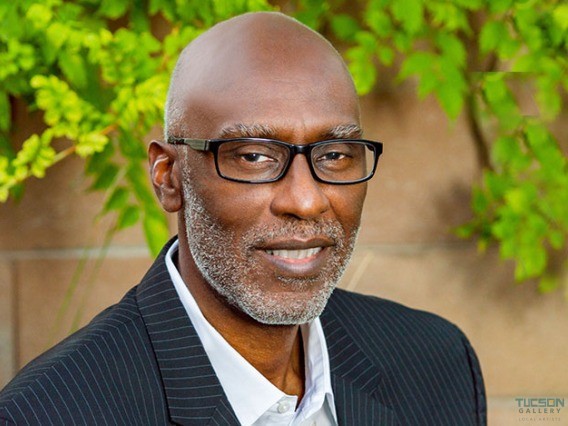
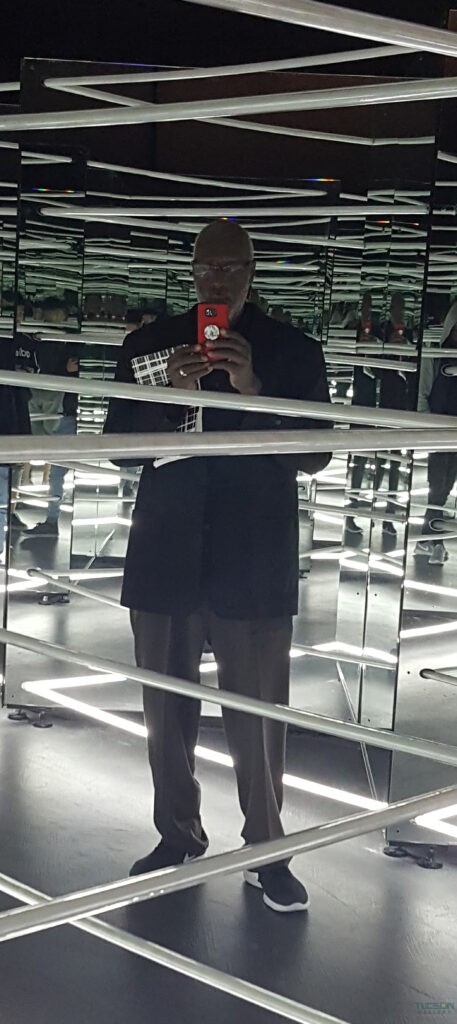
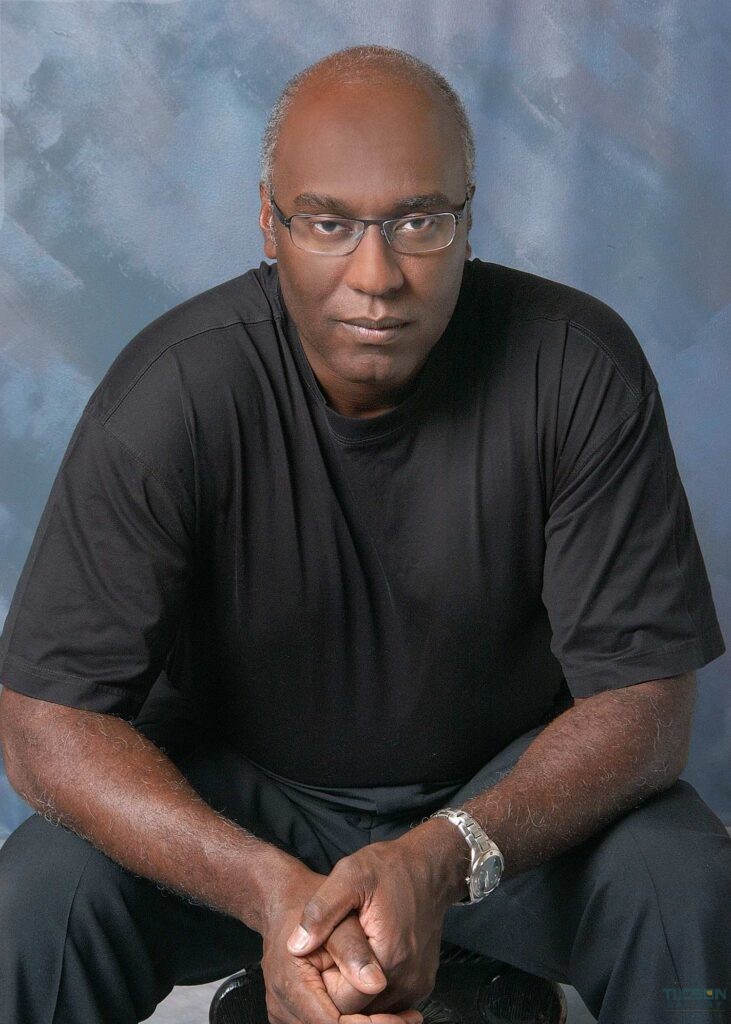
Damon Leverett, AIA, is an architect, artist, and educator based in the southwest region of the United States. He is a former Senior Lecturer at the School of Architecture and a current Adjunct Lecturer with the College of Information at the University of Arizona, where he teaches architecture design, building technologies, installation design, and computing in the arts. A graduate of Lawrence Technological University, he served there as an Adjunct Instructor for its School of Architecture and Design from 1990 to 2001. He established further engagements as a Visiting Lecturer of Architectural Design at the University of Illinois Urbana/Champaign School of Architecture. Damon also holds a Master of Fine Arts in Web Design and New Media from the Academy of Art University in San Francisco.
Damon works in digital alchemy, combining colorful abstract themes with cybernetic painting styles and creative printmaking. His recent works have received recognition from the Helvetart competition, where he took third place in January 2024 for his work “Spatial Delivery 2”. He also received an honorable mention in the Manifest Gallery exhibition in 2019 for his work “Red Room.” Early in his career, Damon worked in abstract acrylic paintings. However, he garnered the most attention for his work in three-dimensional assemblages in glass and metal. Damon has exhibited at the Detroit Artist Market and The Torpedo Factory in Alexandria, Virginia, and was an accepted exhibitor at the 3rd Biannual Exhibit of Architecture in Sau Palo, Brazil, in 1998. Originally from Detroit, he currently resides in Tucson, Arizona...
Where did you grow up?
Detroit, Michigan, is where my artistic journey first began. It’s a city with a rich cultural tapestry that has always been a source of inspiration for me.
Tell us about your family
I’m the middle of two brothers, and together, we shared dreams of how creativity would shape our lives and the world around us. Family has always been a cornerstone of support for my artistic endeavors. Now, I reside in East Tucson with my wife, Amelia Clark, who is a talented glass artist herself.
Do you have pets, if yes, tell us about them
While I have a deep affection for animals, I haven’t had the privilege of sharing my life with a furry friend. My creativity and teaching have been my constant companions.
When did you know that you would be an artist?
My journey into the world of art ignited at the tender age of seven. It all began with pencil sketching, and I quickly discovered the immense joy of self-expression through art. This spark has grown into the vibrant flame that fuels my creativity today.
What is your favorite media to work with?
In recent times, I’ve found my artistic focus in the digital realm and graphic art. The endless possibilities offered by technology have opened up new avenues for my creativity, allowing me to explore and experiment in exciting ways.
What do you do when you’re not doing the voodoo that you do?
When I’m not immersed in my own creative pursuits, I channel my passion for the arts into teaching. At the University of Arizona, I have the privilege of guiding students through the fascinating realm of “Computing and the Arts.” It’s a rewarding experience to share knowledge and inspire budding artists to explore their potential.
